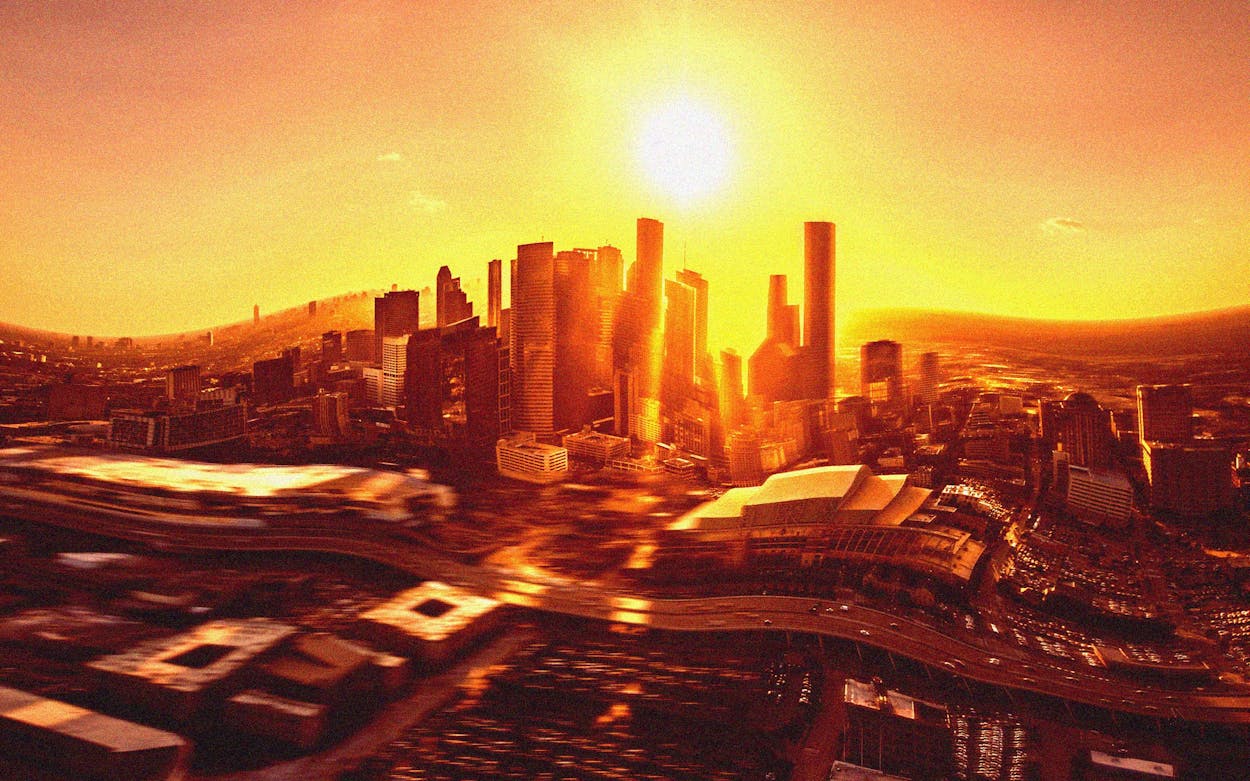It’s that time of year: cue the days of walking outside and straining your eyes to see past the blurry waves of heat in the distance, primed with sunscreen and, hopefully, your security blanket water bottle. Twenty minutes in, it happens. The sweat beads into a small lake on your lower back, and you can no longer form a coherent thought. It’s as if the cavity of your body is stuffed with a fuzzy blanket, too warm for comfort. Are you getting dizzy? Maybe take a swig of water. Is that sweat forming at the back of your knees? Is that normal?
No matter how many times one may claim, “I’m Texan. I’m used to it,” the heat is . . . hot. And now, with weather pattern El Niño in effect, some Texas cities could face triple-digit temperatures about three weeks earlier than in a typical year, according to KXAN meteorologist Kristen Currie. The good news is that, taken as a whole, temperatures throughout the summer won’t be as bad as last year.
But that knowledge won’t help us much over the next week. “It’s all because we’ve got this big area of high pressure sitting on top of us,” Currie says. “There’s going to be many cities from Austin pretty much southward and eastward that will get into the upper nineties to low hundred[s]. Austin certainly won’t be alone in seeing the triple-digit heat.”
Why has Texas been experiencing more weather extremes in recent years? Part of the reason for the hot summers is because the state lends itself to a heat-dome type of atmosphere due to high-pressure systems. Another contributing factor to the heat, as well as to the weather fluctuations, is climate change. “We are going to have those down years where it isn’t quite as pronounced of a warming,” Currie explains. “I think when people hear ‘global warming,’ they think everything is getting hotter. Climate change is more like you’re gonna see more extremes, like last year, but you’re still gonna have average years in between.”
Below we’ve compared this year’s triple-digit onset in major Texas cities to those of years past, and dug into just how many days we can expect to be disgustingly sweaty this summer.
Austin
The city of Austin usually sees the meter hitting 100 degrees around the end of June, with the earliest 100-degree day coming May 4 of 1984. Seems like this year Mother Nature must have channeled Mustafar, the hell planet covered in lava where Darth Vader lived; there’s no doubt temperatures will be hitting 100 degrees early, with a prediction for the first gift as early as next week.
Last summer Austin had sixty-eight 100-degrees-or-higher days, which ranks as the third-highest number of triple-digit days in the city’s history. It would be hard to beat the record of ninety days, which happened in 2011, but anything is possible.
Dallas
Last summer was the fourth hottest for Dallas, with 47 days of triple-digit temperatures, whereas 2011 remains the hottest summer to date.
The year 2006 must’ve been a weird one, as the earliest recorded triple-digit day occurred in April, a full two months before anyone even thinks about preparing for the heat.
El Paso
El Paso’s 2022 summer brought 33 triple-digit days, whereas the average is about 15. The earliest sign of 100-plus-degree weather (since the city began keeping a record, in 1887) occurred May 7, 2020, but it comes in mid-June on average.
Houston
In comparison to other major Texas cities, Houston got off easy last summer with only seventeen days of triple-digit misery. The city is hot and humid, but its average number of triple-digit days is about three. There isn’t much to say here except: you win, Houston.
San Antonio
With rain in the forecast, next week’s likely triple-digit temps in San Antonio will be paired with muggy conditions. Last summer the city reached 58 days of 100 degrees or higher, the second highest on record and just one day short of tying 2009’s record.
The earliest triple-digit day the Alamo City experienced was just a few days after Valentine’s Day in 1996.
While it’s still looking to be a scorcher this summer, our friend El Niño could potentially bring some not-so-hot days, which is more than any Texan could ask for.
- More About:
- Weather








